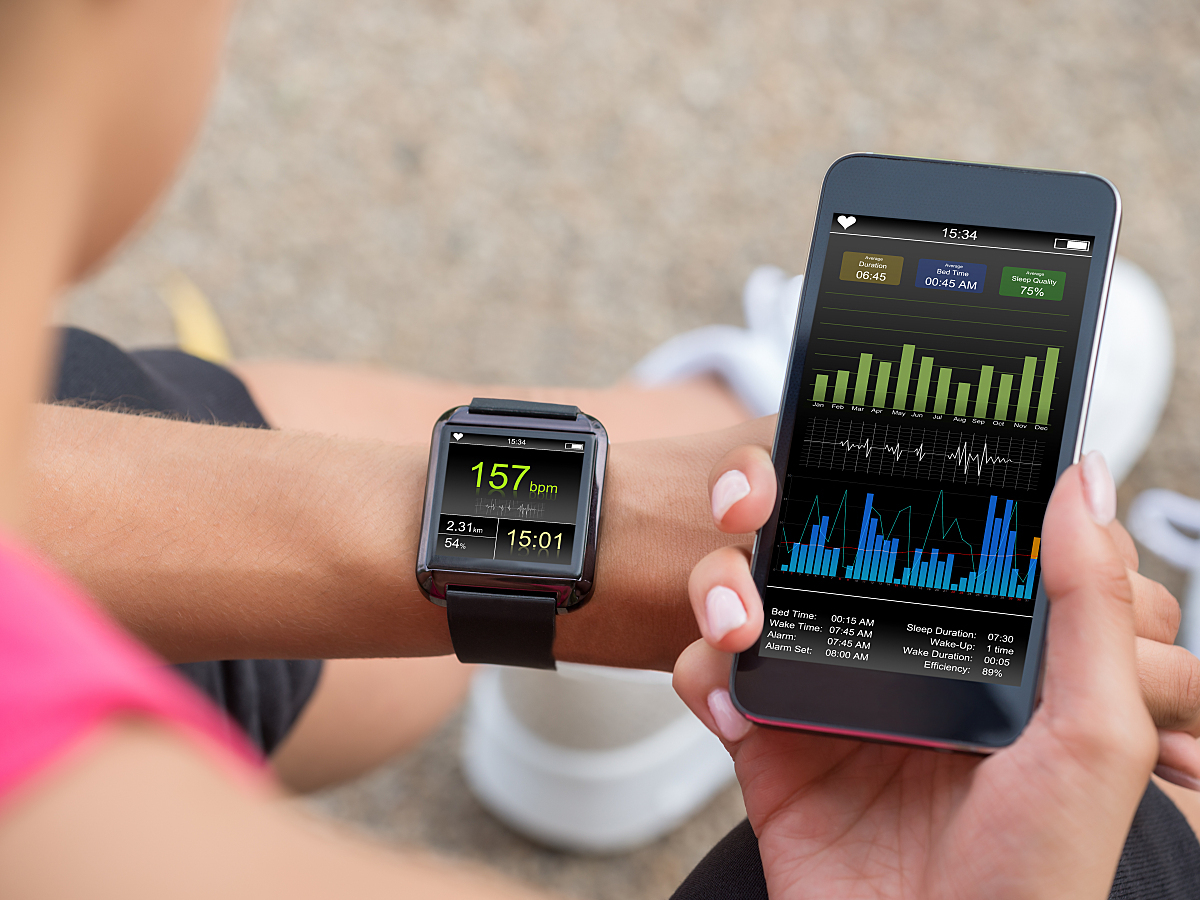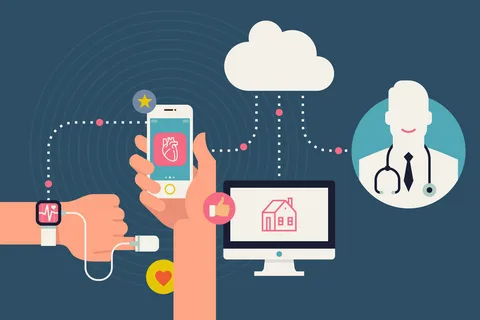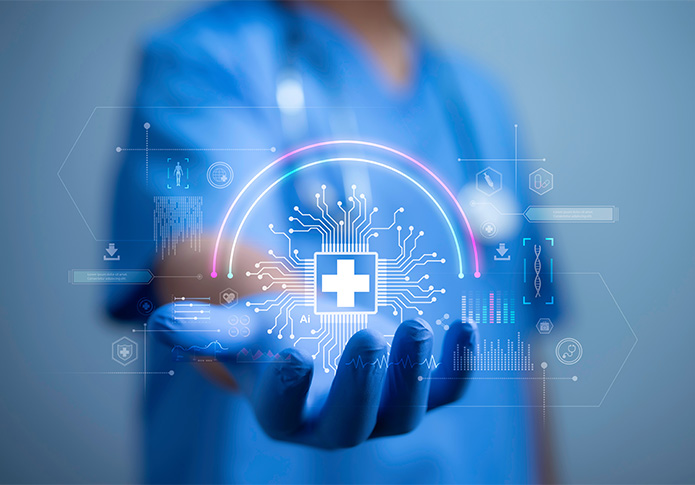Wearable Health Tech:
It has revolutionized patient monitoring systems. These devices attach comfortably to the body and collect vital data. They range from smartwatches to specialized medical sensors. The technology works continuously without disrupting daily activities. This creates an unprecedented level of health awareness for users.
The market for these devices grows exponentially each year. Healthcare providers increasingly recommend them to patients. Tech companies compete to add new health features. Research validates their clinical usefulness in multiple conditions. The accessibility improves with falling prices and better interfaces. Wearable health tech bridges the gap between consumer electronics and medical devices.
The Digital Health Revolution Begins
The healthcare industry is changing fast. Wearable tech stands at the forefront of this transformation. Smartwatches now track heart rates, sleep patterns, and activity levels. They provide real-time health data to users and their doctors. This creates new possibilities for preventive care and monitoring. The data helps identify health issues before they become serious problems.

These devices represent a shift in healthcare delivery. Patients now actively participate in their health management. Doctors gain access to continuous health metrics rather than periodic snapshots. Insurance companies explore new models based on this data. Tech companies invest heavily in advanced sensors and algorithms. The digital health revolution changes how we think about wellness and treatment approaches.
Consumer Adoption and Accessibility
Smartwatches have entered mainstream consumer culture. Their prices range from budget to premium options. Most smartphones now integrate seamlessly with these devices. Setup processes have become increasingly user-friendly. Features expand with each new product generation. Health tracking often drives purchasing decisions for many consumers.
The technology reaches previously underserved populations. Elderly users benefit from fall detection features. Rural patients maintain connections with distant providers. Language options make the technology globally accessible. Children’s versions help parents monitor health conditions. The expansion of cellular-enabled models eliminates smartphone requirements. This democratization of health technology impacts diverse communities worldwide.
Clinical Validation and Medical Acceptance
Medical researchers study wearable accuracy extensively. Clinical trials validate their use in various conditions. Hospitals implement programs using patient-owned devices. Cardiology departments utilize smartwatch ECG capabilities. Sleep medicine benefits from continuous monitoring data. The medical community increasingly accepts these consumer technologies.
Regulatory bodies create frameworks for health wearables. The FDA has cleared several smartwatch features as medical tools. European regulators develop similar approval pathways. Studies compare results with traditional medical equipment. Accuracy continues improving with each generation. This validation bridges consumer technology and clinical medicine. Healthcare institutions develop protocols for integrating wearable data into records.
Population Health and Research Implications
Large-scale health studies utilize smartwatch data. Researchers analyze patterns across thousands of users. Pandemic tracking uses anonymized mobility information. Heart health studies recruit participants through devices. Sleep researchers access unprecedented amounts of data. The scale transforms epidemiological research possibilities.
Public health officials gain new insights through aggregate data. Population-level trends emerge from anonymous information. Early warning systems for disease outbreaks have been developed. Environmental impacts on health become measurable. Behavioral interventions can be tested at scale. This creates powerful new tools for understanding and improving public health. Research accelerates through the vast amounts of available data.
How Smartwatches Monitor Your Health
Modern smartwatches contain multiple health sensors. They track heart rate, blood oxygen, ECG readings, and temperature. Some models detect irregular heart rhythms and potential arrhythmias. Others monitor stress levels through heart rate variability. The technology improves with each new generation. Users receive alerts when readings fall outside normal ranges.

Health monitoring happens passively throughout the day. The watch collects data without user intervention. This creates comprehensive health profiles over time. Users can share this information with healthcare providers. Doctors use the data to make better diagnoses. Patterns emerge that might not appear during office visits. This continuous monitoring represents a major advancement in personal healthcare.
Preventing Disease Through Early Detection
Medical signs that signal a problem appear before the onset of serious disease indicators. Wearable health tools can detect these subtle changes. Heart rate irregularities might signal cardiac issues. Sleep disturbances could indicate stress or other conditions. Drops in activity levels might reflect developing health problems. The watch alerts users to these changes immediately.
Prevention becomes more accessible through this technology. Users receive notifications to increase activity or manage stress. The data helps doctors intervene earlier in disease progression. This potentially reduces hospitalizations and emergency visits. Treatment outcomes improve with earlier interventions. Health costs decrease when conditions are caught early. Wearable devices create a proactive rather than reactive approach to healthcare.
The Role of AI in Health Wearables
Artificial intelligence enhances smartwatch capabilities. AI algorithms analyze vast amounts of health data. They identify patterns invisible to human observation. The systems learn each user’s unique baseline measurements. They can predict potential health issues based on subtle changes. This creates truly personalized health monitoring.
Machine learning improves diagnostic accuracy over time. The systems compare individual data with population-wide metrics. They identify when interventions are necessary. AI reduces false alarms while catching real concerns. It transforms raw data into actionable health insights. Users receive specific recommendations rather than just numbers. The combination of wearables and AI creates powerful health tools.
Chronic Disease Management Gets Smarter
Health technology wearables yield substantial advantages for patients with long-term health issues. Continuous glucose monitoring helps manage diabetes. Heart patients track cardiac metrics throughout treatment. Respiratory conditions are monitored through activity and oxygen readings. The technology helps patients follow treatment plans more effectively.
Medication adherence increases with smartwatch reminders. Activity goals are adjusted based on health status. Patients share data with specialists between appointments. Doctors modify treatments based on real-world results. Recovery progress is tracked accurately over time. Complications are identified earlier when intervention is most effective. The management of chronic conditions becomes more dynamic and responsive.
Privacy Concerns in the Connected Health Era
Health data requires special protection. Wearable health-related companies face scrutiny over data practices. Users worry about who can access their information. Insurance companies show interest in utilizing this data. Privacy policies vary widely between manufacturers. Technology outpaces regulatory bodies in their ability to create suitable legislation.
People need to understand the purpose of data processing. Some companies sell anonymized health information. Others maintain stricter control over user data. HIPAA protections may not cover all wearable data. Users should research privacy policies before purchasing devices. The benefits of health monitoring must be balanced against privacy concerns. Transparency from manufacturers helps build user trust.
The Future of Wearable Technology
Next-generation devices will include more advanced sensors. Blood pressure monitoring without cuffs is being developed. Glucose monitoring without needles shows promise. Kidney function and hydration status sensors are in testing. Mental health monitoring through multiple metrics is advancing. The capabilities will expand dramatically in the coming years.
Integration with healthcare systems will improve. Doctors will prescribe specific wearable devices for patients. Insurance companies may offer incentives for their use. Remote patient monitoring will become standard practice. Hospital readmissions could decrease through better monitoring. The line between consumer devices and medical tools will blur. Wearable health devices will become an essential part of healthcare delivery.
A Transformed Healthcare Landscape
Smartwatches represent just the beginning of the wearable revolution. The technology continues to evolve rapidly. More health metrics become available each year. The integration with healthcare systems deepens. Patients gain greater control over their health. Preventive care becomes more effective through continuous monitoring.
The digital health revolution transforms healthcare delivery models. Data-driven decisions replace intuition and sporadic testing. Patients and providers form new partnerships around shared information. Treatment becomes more personalized and timely. The benefits extend across the entire healthcare ecosystem. Follow DP World News for more about general health technology topics and the latest advancements in wearable health tech.






